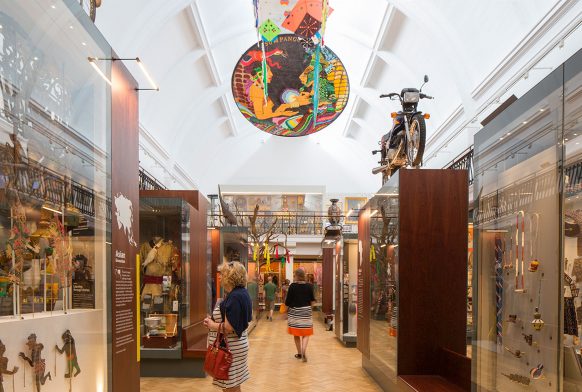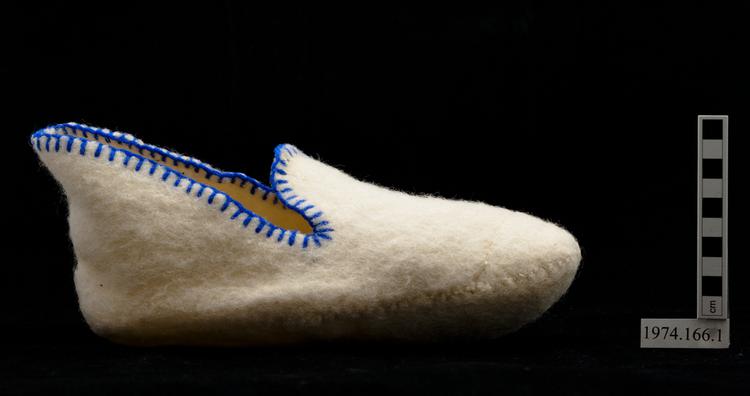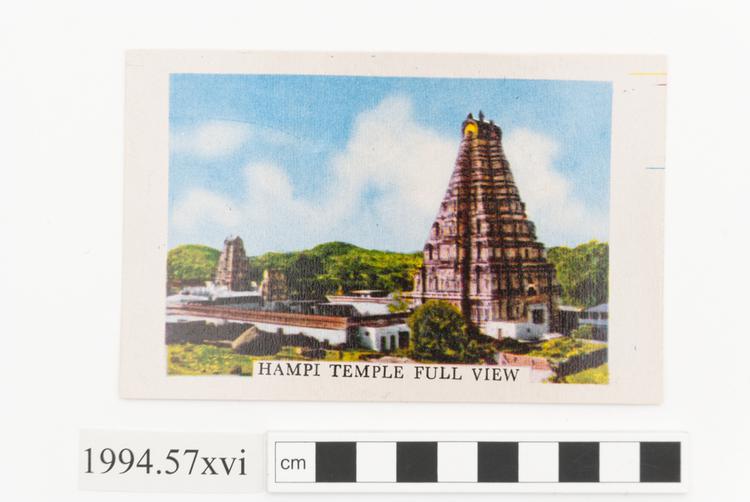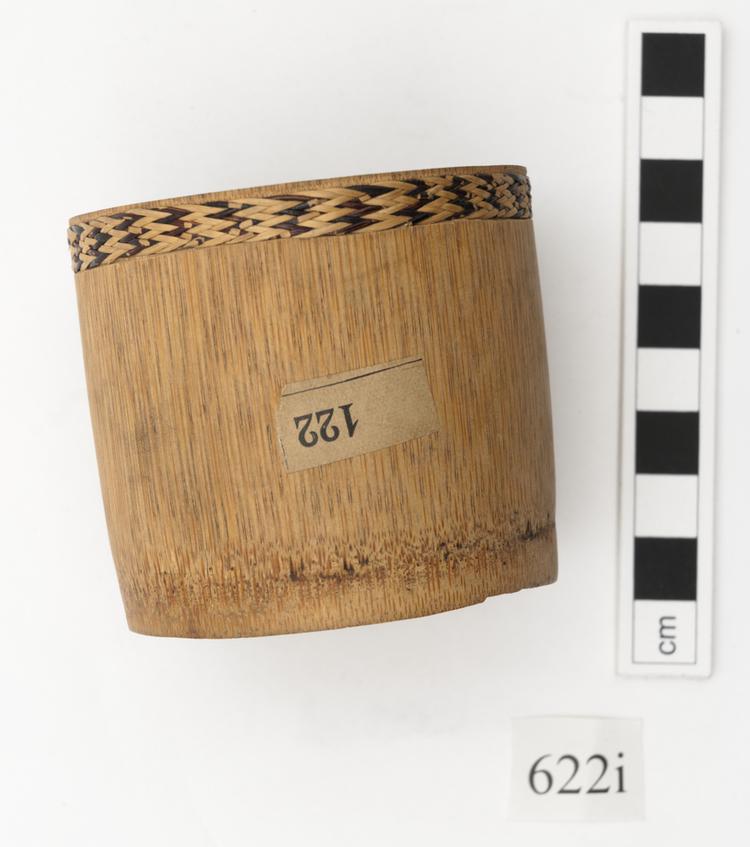
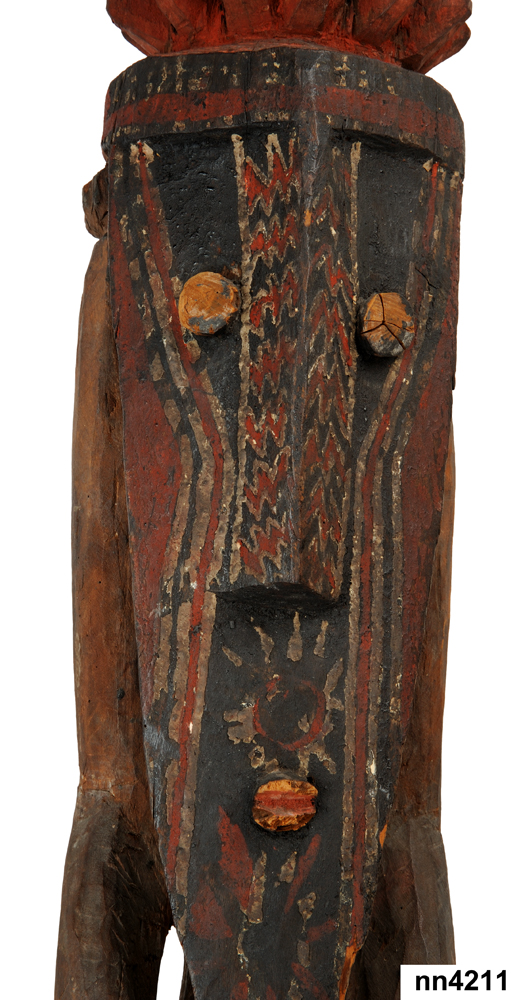
Grade statue for the gable end of a gamal (men's house), made of wood and pigment. Banks Islands, Vanuatu. Late 19th century.
This figure was made as part of th initiation rights to enter one of the grades in the sukwe hierarchy system. It is carved from a single piece of wood, and depicts a male figure wearing a headdress decorated with red pigment.
Grade Statue for Gable End of a Gamal Men's House, Possibly Gaua island, Banks Islands, Vanuatu. Such free-standing figural sculptures were formerly carved throughout much of northern Vanuatu, but this particular style is characteristic of the Banks Islands. Carvings very similar to this example were photographed on Gaua island by the anthropologist Felix Speiser in the early 20th century. This hardwood figure would have formed the central element in a collection of carvings and painted boards decorating the end of a men's house (gamal). In many parts of Vanuatu, initiated men lived separately from women and children. In the Banks Islands, the residence and dining of men within the gamal was determined by their rank within the sukwe system of initiation grades: men of different grades were not permitted to share the same cooking fire. Men could only gain membership of each grade in the sukwe hierarchy by holding membership of the preceding grade. Entry into each grade was bought with strings of shell currency and pigs. Initiation into certain grades, however, also demanded the carving of complex grade statues such as this one. This in turn demanded the purchase of the design copyright on such an image, which required further expenditure of money and livestock. A few broken projections at the groin reflect the fact that this sculpture is male, and formerly bore an erect penis. Like male sculptures from elsewhere in the Pacific, this imagery reflected fertility, creativity and effectiveness, rather than erotic qualities. Such features were often considered obscene by 19th century Europeans, and so many Pacific sculptures were defaced in this way to make it acceptable to sell them on the art market or display them in museums. Wood, pigment. Late 19th century. Collected by Admiral Sir Gerard Noel RN, British Commander-in-Chief of the China Station and Western Pacific 1904 - 1907.



